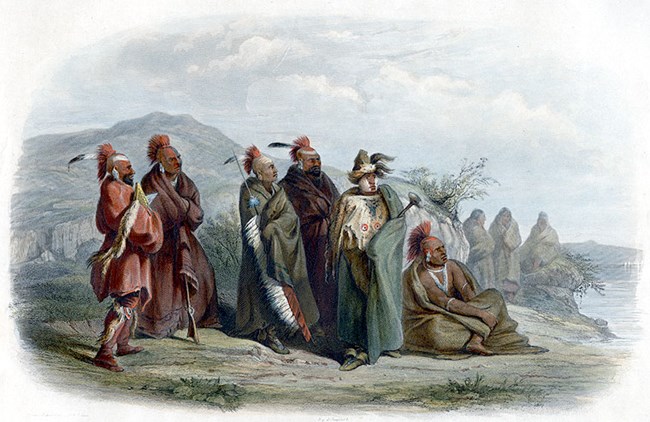Last updated: February 19, 2021
Article
Sauk Tribe and the Lewis and Clark Expedition

Clark gave them 75 pounds of beef, 25 pounds of flour, and 50 pounds of cornmeal. About five weeks later, a Sauk chief and about 10 men stayed near the fort, at the same time a group of Kickapoos were visiting.
The Sauk, also known as Sac, were so closely allied with the Fox people they appeared to most Euro-Americans to be one tribe. During the 18th century, they lived on both sides of the Mississippi River in today’s Iowa, Wisconsin, and Illinois. An Algonquian-language people, the Sauk were believed to have originally developed along the St. Lawrence River. hey were pushed into today’s eastern Michigan by the Iroquois, and later the Anishinaabe and Huron people forced them into the upper Mississippi valley. Ultimately, the Sauk and Fox settled the longest in the tall-grass plains of central Iowa.
Sauk families lived in villages of longhouses and farmed for much of the year -- corn, wild rice, squash, and beans were their primary crops. In the fall and winter they traveled around hunting, living in portable lodges with reed-mat walls.
